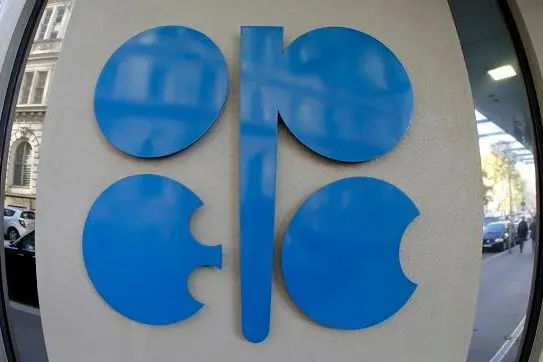PHOTO
UAE - When OPEC+ takes decisions, markets move. Many analysts were surprised that OPEC+ stayed the course at last Thursday’s ministerial meetings and continued increasing output by 400,000 bpd according to its schedule.
Markets liked what they saw: After initially losing ground, oil prices rose steadily through the Asian trading session. On Friday, Brent was up some 2.9 percent by early afternoon CET, rising from a low of just above $66 per barrel early Thursday to $71.68.
The OPEC+ ministers’ decision came on the back of the worst month in oil markets since April 2020, when the full impact of the pandemic hit the world economy.
First, an announcement from the US and five other major producers, including China, India and Japan, had a dampening effect on oil prices. Then the emergence of the omicron variant of the COVID-19 virus spooked markets, resulting in wild oil price swings.
The OPEC+ decision was especially surprising because OPEC, the Organization for Economic Cooperation and Development’s International Energy Agency, and the US government’s Energy Information Agency all foresaw oil markets swing from deficit to a supply overhang in the first quarter of 2022. This in itself was not surprising, because seasonal adjustments at the height of winter in the Northern hemisphere are nothing out of the ordinary. What was unusual, though, was that the forecasts of the three entities widely varied in magnitude and duration of the forecasted oil glut, with OPEC making the most pessimistic forecasts. Indeed, in an internal OPEC document leaked to Reuters, OPEC+ adjusted the supply overhang for the first quarter upwards to 2 million bpd, 3.4 million bpd and 3.8 million bpd for January, February and March respectively.
So, what should we read into the OPEC+ decision to raise production despite concerns about the impact of omicron on the global economy and oil demand?
OPEC’s decision can only be understood in context. Ever since the 23 allies decided to curb production by 9.7 million bpd as of May 2020, they have followed a very steady output policy. When they decided to increase production by 400,000 bpd starting in August of 2021 through September of 2022, they were neither deterred by rising oil prices nor by the pressure of major consumers to release more crude. The latter led to the releasing of strategic reserves, which still did not deter OPEC+ from its course.
The allies reasoned that they were cautiously observing how COVID-19 would impact the global economy going forward. The emergence of omicron and the panicked reaction in many countries — closing their borders or reimposing quarantines — seems to have proved them right, as has the fourth wave of the virus hitting Europe, resulting in national and regional lockdowns.
OPEC+ stayed the course when markets were oversupplied. It is therefore a sign of consistency not to rush into a hasty reaction in response to a variant of the virus about which so little is yet known.
If anything, OPEC+ has convinced by its ability to make fact-based decisions throughout the course of the pandemic. The wait-and-see attitude is therefore more than justified, especially as the organization has an in-built valve to release pressure. Ministers meet once a month and can adjust the course of action with the help of information provided by the Joint Ministerial Monitoring Committee, which is ably chaired by Saudi Energy Minister Prince Abdulaziz bin Salman and Russian Deputy Prime Minister Alexander Novak.
OPEC+ added an even faster response mechanism this time around, because the conference did not close, but has “stayed in session pending further developments,” meaning that ministers can reconvene and adjust their decision at the shortest of notice.
Staying the course might also have reflected a hint of geopolitical realism against the backdrop of major consumers tapping into their strategic reserves. It is no coincidence that a senior US delegation had visited the GCC members of OPEC+ in the week leading up to the ministerial meeting.
From a purely market perspective the organization was rewarded for keeping its cool. The effect can be likened to a share buy back in equity markets, which signals a company’s confidence to investors.
Given the quick response mechanism, OPEC+ truly had nothing to lose by staying the course while closely monitoring future developments. Markets rewarded the decision. In this case there is something to be said for consistency and a “steady as she goes” attitude.
• Cornelia Meyer is a business consultant, macro-economist, energy expert and CEO of Meyer Resources.
Twitter: @MeyerResources
Copyright: Arab News © 2021 All rights reserved. Provided by SyndiGate Media Inc. (Syndigate.info).












